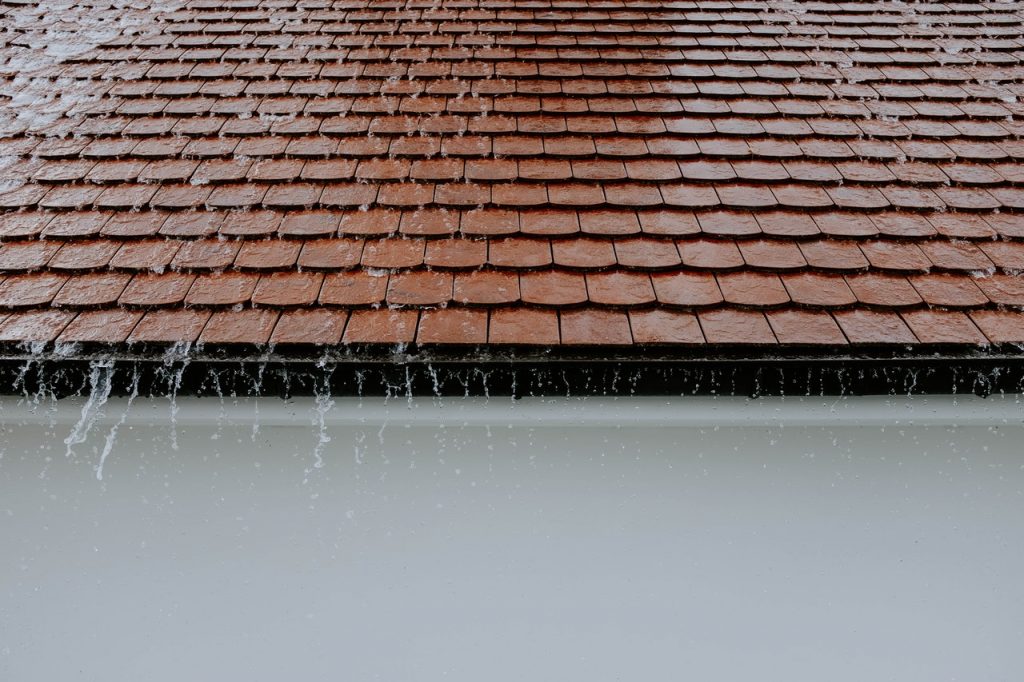Do you find yourself scrambling to look for a drip bucket every time it rains? Even a little drip during the rainy season can indicate a serious roofing problem.
We all know that roofing problems necessitate a significant expenditure of time and money. It is best to get the problem fixed while it is still a minor drip before it turns into heavy rain flow that can damage your belongings and endanger the integrity of your structure.
This article will list down the most common causes of roof leaks and how you can fix them before they become a bigger problem that requires repair or roof replacement.
A Crack in Your Flashing
Flashing is a thin sheet of metal fitted beneath the shingles and on the roof’s seams to provide a water-resistant buffer that can be hidden or exposed. They’ll appear as long lines of sheet metal if they’re visible and have a rubberized covering if they’re hidden. Large fractures will occur in broken flashing.
Roofers frequently use tar to join the flashing, which can deteriorate over time. If your flashing is left exposed, factors such as wind and rain may cause it to shatter.
To fix this, pry up the nails used to secure the old flashing once you’ve found the source of the leak. Remove any shingles that are in the way and the cracked portion. Place a fresh run of flashing in its place and secure it with roofing nails in the same pattern as the previous piece.
Then, on the nail heads, apply a layer of roofing sealant. Check the flashing around your chimney and vents regularly to make sure there are no gaps allowing moisture in.
Broken Shingles
It’s simple to detect this one. Because shingles comprise the roof’s outer layer, you should be able to spot missing shingles on your roof by looking for different-coloured areas. After a terrible storm, you can discover the shingles themselves littering your yard.
Pry the row of nails that links the damaged shingle to the one below it with a pry bar. Lift until the nail bursts, then remove the nail by pressing down on the shingle. Carry on with the rest of the nails in the same manner. Remove the shingle that has been broken and replace it with a new one, securing it with four new nails.
Cracks in Your Vent Booting
Roof vents are the little pipes that protrude from the top of your roof. They’re utilized to remove excess moisture from the house’s interior. Leaks from this location will almost certainly result in black areas.
Remove the rubber surrounding the vent using a knife. Break the seal on any connected shingles using a pry bar. Bring the new rubber boot down onto the roof, beneath the shingles and over the vent. Then, caulk beneath the shingles to seal them to the new flashing and fasten the new boot with roofing nails on both sides.
Build Up of Ice Dams
A ridge of ice forms at the edge of a roof, preventing melting snow from flowing away. The weight of the ice itself and the water lying on the roof’s surface can cause damage.
Invest in a roof rake, which looks like a long-handled sideways shovel, and use it to reach onto the roof and remove at least four feet of snow from the roof edge. If you notice an ice dam building, use an ice melt product according to the manufacturer’s instructions. Prepare to find a technique to clean the snow off your roof as winter approaches.
Conclusion
A roof is an essential part of our house or building. We cannot afford to ignore any leak or problem in our roof since it can cause a lot of damage to our house structure.
A leaking roof will not only cause a lot of damage to the house, but it may also cause stagnant water problems. It’s better to fix it right away before it becomes a significant problem. However, this is often risky to do on your own, and you’ll need the help of professionals.
Do you have a leaking roof in Saskatoon? Wilderness Roofing has years of quality and reliable roofing services. Give us a call to get a quote today!

